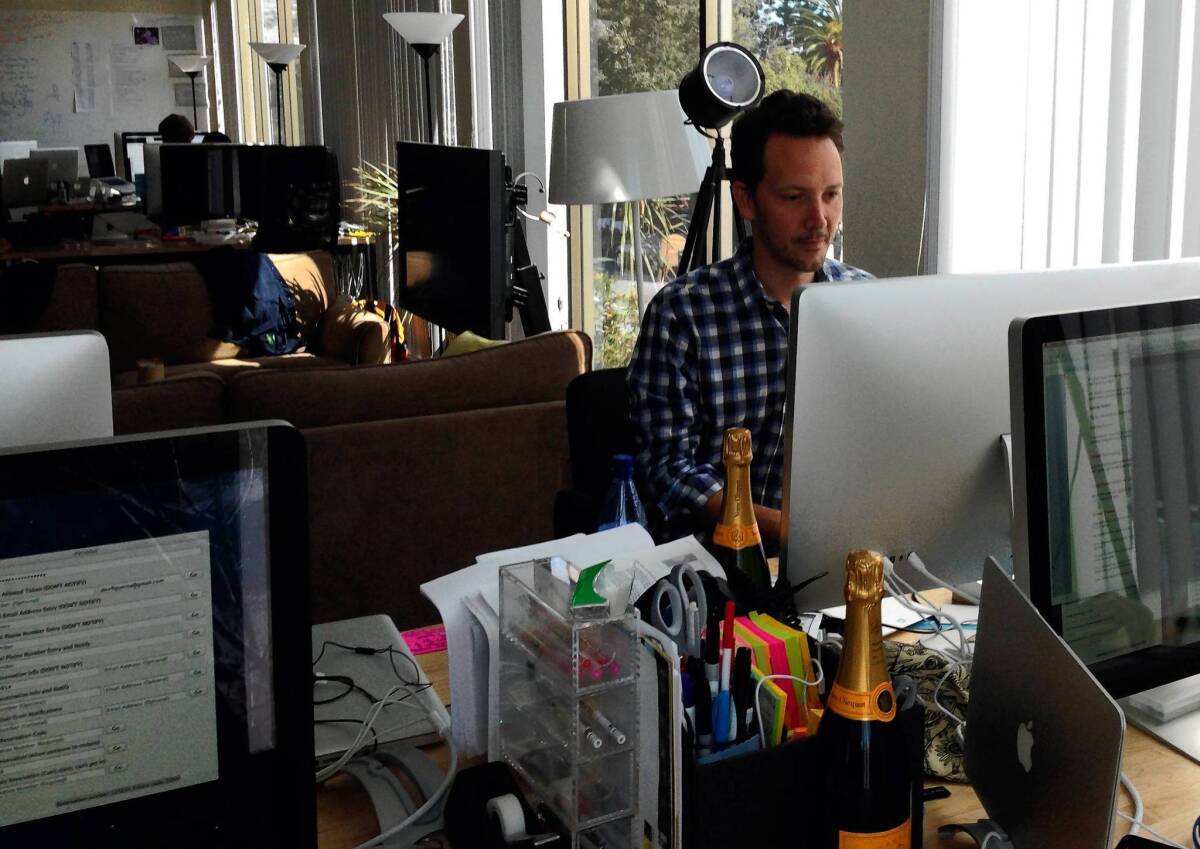Dropbox buys maker of popular email improvement app Mailbox

- Share via
PALO ALTO — Gentry Underwood’s tiny start-up rolled out a mobile app last month that promised to tame the unruly email inbox, the bane of the digital age.
Not surprisingly, the iPhone app became an overnight sensation as more than 1.3 million signed up just to be on the wait list.
Dropbox apparently couldn’t wait, and on Friday the online storage company bought Orchestra, the company that makes Mailbox. Terms of the deal were not disclosed.
“We want to give Mailbox to everyone who wants it, and there are a lot of people who want it. We could raise more money and hire a bigger team but joining Dropbox gives us the opportunity to scale more quickly,” said Underwood, chief executive and co-founder of the Palo Alto company.
People have long been driven to distraction by the incessant pings of new email arriving on their computers. The digital deluge has only gotten worse now that those messages are vibrating in our pockets, too.
“How many of you have read an email on your phone and marked it unread so you could read it on your PC later?” Yahoo Chief Executive Marissa Mayer asked at the Goldman Sachs Technology and Internet Conference last month. A lot of hands went up, including Mayer’s.
“Mail isn’t done. There are a lot of things about it that can be improved,” Mayer said. “There’s opportunity for innovation there.”
Mailbox has emerged as an early favorite to make email smarter on the smartphone. Staffed with alums from Apple, design-firm Ideo and Stanford University, Orchestra raised $5.3 million. It started working on an app to fix the mobile inbox a year ago.
The Herculean effort stemmed from Underwood’s personal struggles with email.
“I am certainly not alone in thinking that email is generally a big pain in the butt. I easily get hundreds of messages a day and just staying on top of that is a real frustration,” he said.
Email, which was born in the 1970s and hit the mainstream in the 1990s, is the technology everyone loves to hate. Chris Anderson, curator of TED conferences, called it a “giant rats’ nest of voracious demands on our time, energy and sanity.” He drafted an “email charter” that called for everyone to think before they hit the send button.
“We’re drowning in e-mail,” Anderson wrote. “And the many hours we spend on it are generating ever more work for our friends and colleagues.”
But email is not going away. It’s used by billions the world over. So Mailbox decided to change what it could: the inbox.
Mailbox gives people simple, easy tools to perform email triage, like a doctor does in the emergency room. The approach was inspired by management consultant David Allen’s time-management philosophy “Getting Things Done” — “do it, delegate it, defer it, drop it” — to help people empty their inboxes and relieve that nagging anxiety that they have left something undone.
Mailbox lets users quickly swipe to archive, delete or file messages or add them to lists “to read” or “to buy.” Users can also “snooze” an email: It disappears from the inbox and comes back later that day, on the weekend or the following week.
Users say one of most addictive parts of Mailbox is achieving “inbox zero.” Underwood said 30% of Mailbox users empty their inboxes every week. They are rewarded with the message: “You’re all done” and a photograph that conveys a Zen-like peace of mind — even if it’s only fleeting.
The Mailbox team knew there was demand for the product when they put up a video previewing it in December. Underwood thought it might fetch 100,000 views. It got that many views in the first four hours.
Mailbox debuted last month. The tsunami of app downloads quickly engulfed the 15 staffers working out of a small, no-frills office in downtown Palo Alto.
Mailbox came up with an unusual system to make sure the app didn’t crash under the weight of all the new users. When users download the app, users don’t get it right away. Instead the user has to make a reservation like at a restaurant. A countdown lets users see how many people are in front of them and how many behind them — but not how long the wait could be.
Abut 750,000 people are using it. The app currently works only with Gmail but the company plans to expand its compatibility to all types of email and gadgets. Underwood said his team also has many more features planned.
It will be far easier for the team to get all of that done, he said, now that Mailbox is part of Dropbox, which has 100 million users and about 250 employees. Investors have valued Dropbox at around $4 billion. Mailbox will remain an independent app. Dropbox will also use Mailbox’s technology to improve its own features such as email attachments.
“We all quickly realized that together we could save millions of people a lot of pain,” Dropbox co-founders Drew Houston and Arash Ferdowsi wrote in a blog post.
More to Read
Inside the business of entertainment
The Wide Shot brings you news, analysis and insights on everything from streaming wars to production — and what it all means for the future.
You may occasionally receive promotional content from the Los Angeles Times.








